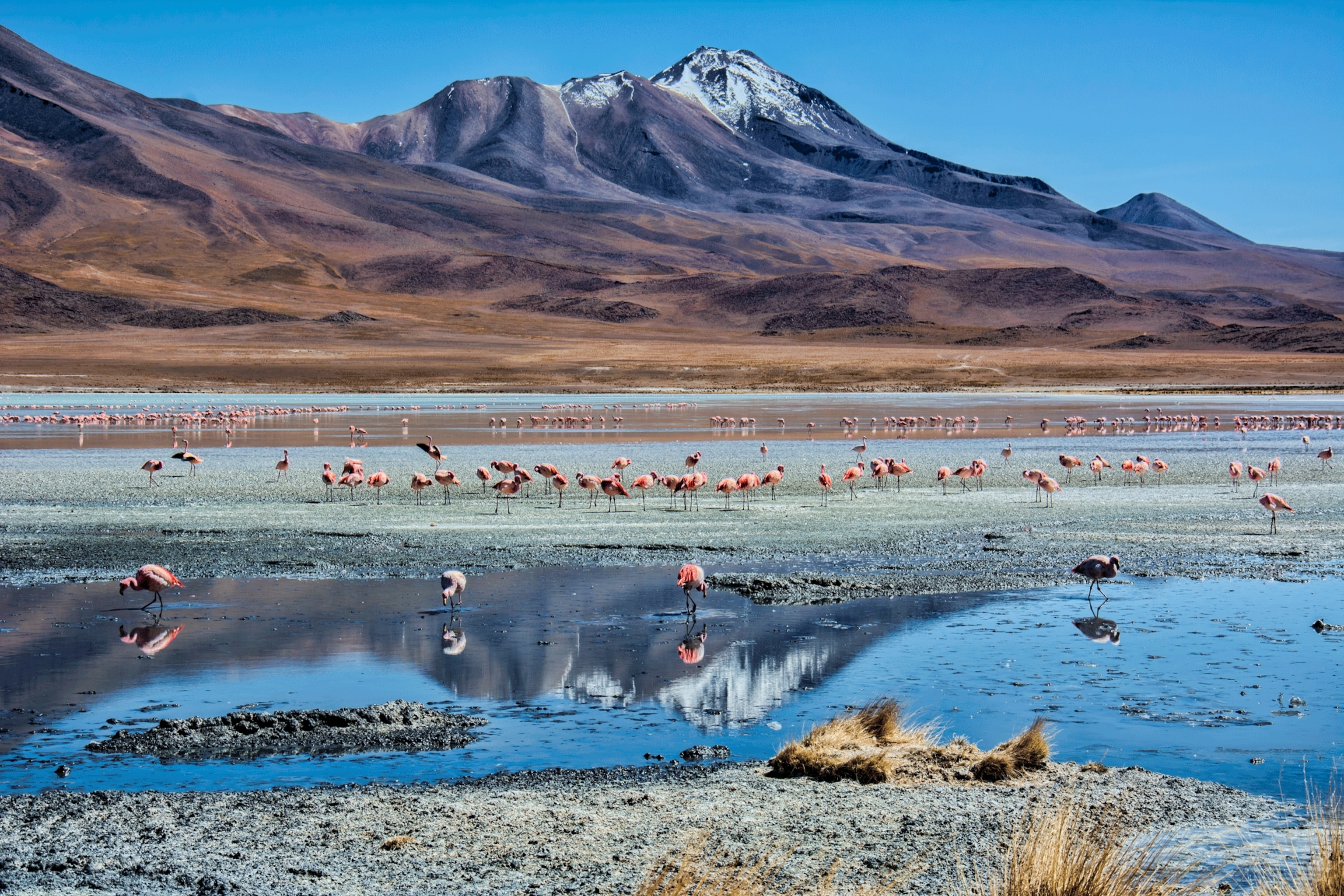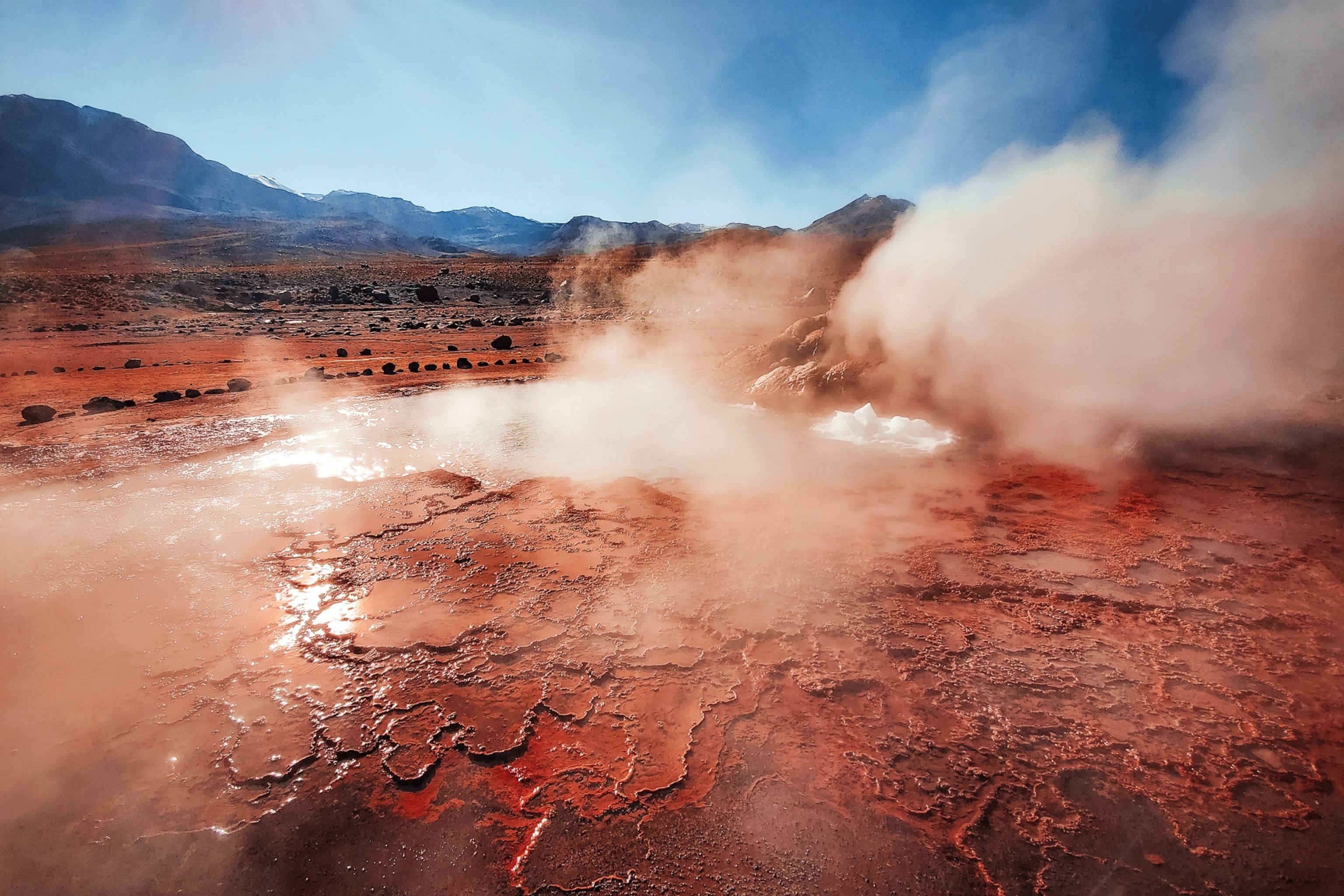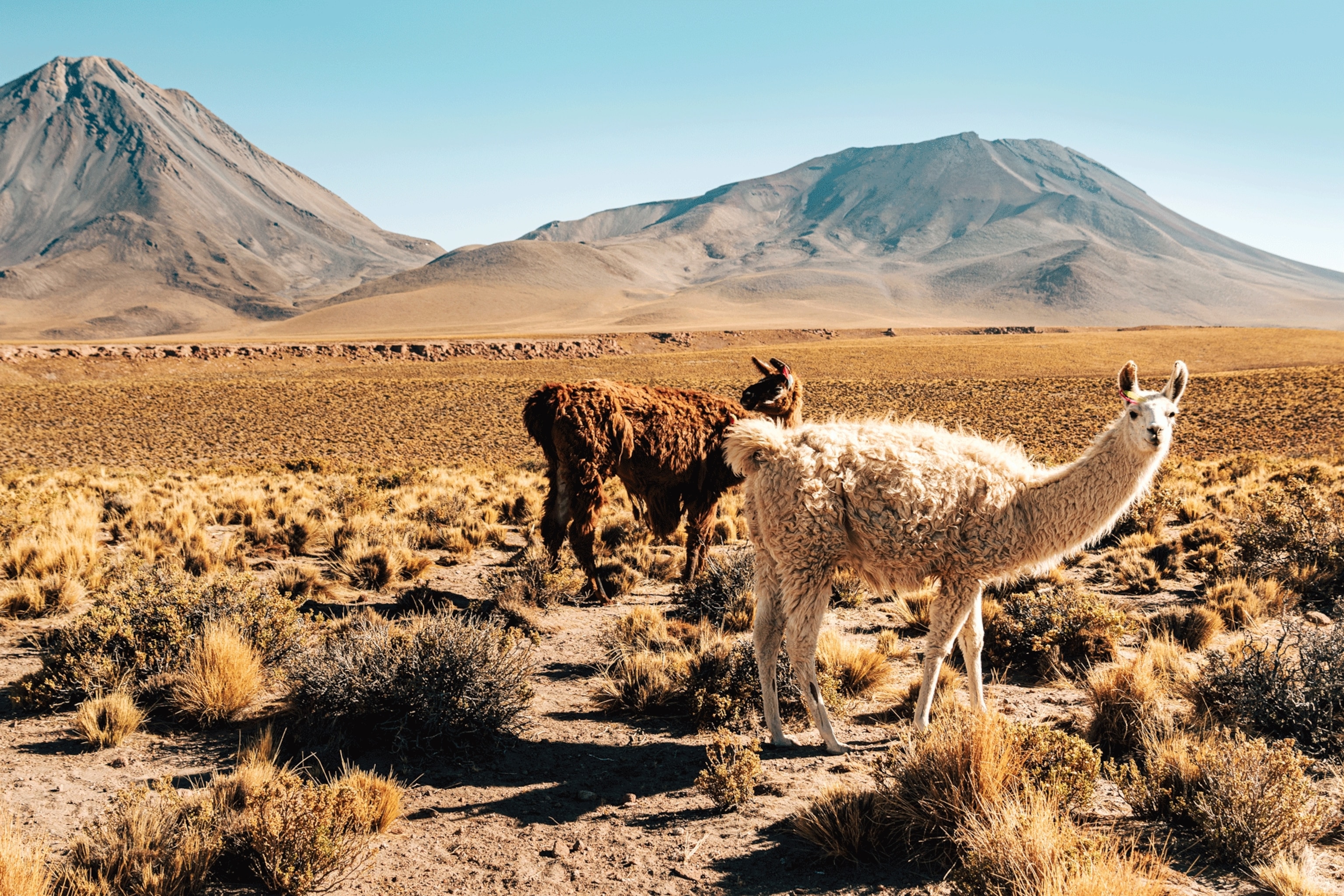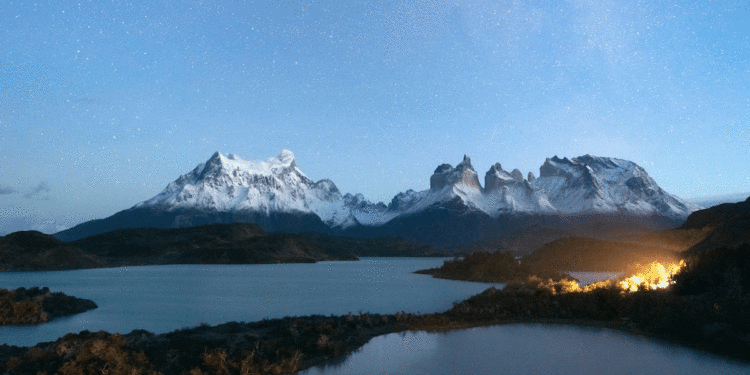From the snow-capped peaks in Torres del Paine to lush vineyards in the Central Valley and gurgling geysers in El Tatio, Chile is known for its startlingly diverse climates and vast, impressive landscapes. Yet, when the sun sinks and the skies morph into a dazzling dome of stars, some of Chile’s most magnificent spaces come into their own. Thankfully, the country is home to a handful of dark sky reserves where the lack of light pollution can help astronomy enthusiasts feel that bit closer to the universe. Local author and astronomer Rodrigo Zúñiga Vásquez reveals what makes Chile an astronomer’s paradise.
Rodrigo Zúñiga Vásquez focuses on the historical relationship between humans and the night sky, exploring how this connection has influenced our culture and thinking throughout history.
Photograph by Chile Travel
How did you get into astronomy?
It was a coincidence really. I grew up in Concepción in southern Chile where there are lots of clouds, and I didn’t know much about the stars. However, after studying English and French at university, I ended up moving to the Atacama Desert to translate astrotourism tours. After several months of interpreting, I found myself conducting my own observations, and it wasn’t long before I spent every evening looking at the sky.
I realised that the fascination I had with it was nothing to do with distance, but with the experiences I had lived beneath it. I became interested in the anthropological side of astronomy. It allowed me to investigate the past and discover how we build relationships with the sky. With this in mind, I created the Bajo La Noche De Atacama (Under the Atacama Night) astronomy tour, which focuses on the anthropological aspects while still tying in scientific facts, including distances, masses and sizes. It’s designed to help guests understand and appreciate the universe more.
Why do you love stargazing?
For every important moment in your life, there’s a sky, which creates a special connection between the universe and your own memories. This is what led me to write my books Under the Atacama Night: The Constellations of the Zodiac From Southern Latitudes and Under the Atacama Night: Flying Animal Constellations. The first title is an illustrated compilation of the zodiac constellations and the second is a retelling of the mythology of the constellations. I hope the books help others to not only learn about the universe and its various celestial objects, but to also consider their own relationship with the night sky.
What makes Chile such a haven for stargazers?
Chile has more than 2,000 miles of mountain range running through it, creating a variety of places without light pollution. This is an essential condition for successful stargazing. The Atacama Desert, located in the north of the country, is particularly good for mapping out the constellations as it has barely any clouds and averages around 300 clear nights a year. It’s also one of the driest places on Earth — this low humidity means the sky is crisp and sharp, offering the perfect conditions for astronomical observations.

Despite the harsh conditions, the Atacama Desert’s high-altitude lakes sustain a variety of wildlife, including Chilean, Andean and James’s flamingos.
Photograph by Dominic Royé, Getty images
How can I plan my trip to the Atacama Desert?
The town of San Pedro de Atacama is a great base with lots of accommodation options and stargazing tours. Each tour offers something a little different. On my tour, the Bajo La Noche De Atacama, we first observe the sky with the naked eye, identifying the most important symbols and constellations created over thousands of years of observations. We then look at the sky through telescopes, which, depending on the season, can reveal nebulae, clusters, varying planets and stars at different stages of evolution. After warming up with a bonfire and a hot drink, we have an astrophotography session in a dark area of our observation site.
The astrotour with Layana Travel is another fantastic option. Lead by a Latin American guide, the tour takes a deep dive into Andean archaeoastronomy and maps out the constellations of the Southern Hemisphere using a laser pointer.
I also recommend spending the night in one of the villages outside the desert, such as Socaire, a quaint, rural hamlet home to around 400 people. Many guided tours to the Atacama Desert stop for lunch there to sample traditional dishes such as patasca, a stew made of pork, beef, corn and potatoes.

El Tatio covers an area of 12 square miles, with geysers, boiling water fountains, hot springs and mud volcanoes seeping steam across its expanse. Many operators run day tours here, especially during the early morning hours when the geysers are most active.
Photograph by Tatsiana Volskaya, Getty Images
What else can I do in the Atacama Desert?
There are all kinds of activities and tours to take in the lunar landscapes of the Atacama Desert. Travellers can trek to the high-altitude lagoons of Miscanti and Miñiques, witness the geothermal spectacle of El Tatio Geysers at sunrise, marvel at flamingos on the Atacama Salt Flats and soak in the Puritama Hot Springs.
What’s your all-time favourite spot for stargazing in Chile?
Piedras Rojas, located approximately two hours’ drive south of San Pedro de Atacama, is a particularly special spot of mine. It’s around 13,000ft high, with a shallow salt flat surrounded by reddish rocks and mountain peaks that all point up to the starry sky. If I have friends visiting, I always take them to the viewpoint just before you get to the Piedras Rojas site itself.
Why do you think stargazing has regained popularity recently?
This year we’re seeing lots of solar phenomena through the auroras and eclipses. There’s a lunar eclipse in September, which will be witnessed across the world, plus a solar eclipse in southern Chile in October. While this doesn’t affect what we see in terms of stars, people are thinking more about the sky in general.
What does the future hold for you?
As an amateur astronomer and writer, I’m keen to keep studying the sky and its stories. I love rediscovering things we felt were lost or have been forgotten. We’re reclaiming aspects that will flourish again, and I want to continue sharing that with more people through my tours and my writing.
What makes Chile such a special destination for visitors?
We have so much variety when it comes to scenery and experiences. Beyond the Atacama Desert and stargazing, I recommend visiting Chiloé Island and the wine region located in Central Valley, just south of Santiago. The former has an undulating, wooded landscape with unique viticulture traditions.

One of Patagonia’s most widely spread animals, guanacos make near-constant companions for hikers making their way through the pampa of Torres del Paine National Park.
Photograph by Nikada, Getty Images
Three more destinations for stargazing in Chile
1. Torres del Paine, Magallanes
In Chile’s far south, in the northeastern part of the Magallanes region, Torres del Paine National Park is known for its shimmering lakes, cobalt glaciers and towering granite spires. When the skies are clear, this monumental landscape provides an idyllic backdrop for mapping out the constellations, largely due to its remote location and lack of light pollution. On any clear night, you can step outside into the darkness and be treated to a sparkling show as the stars of the southern hemisphere reflect off water, ice and snow.
2. Elqui Valley, La Serena
Declared the world’s first International Dark Sky Sanctuary in 2015, this vineyard-filled valley has the perfect climate and geographical conditions for seeing star-studded skies: the Andes mountains to the east block the clouds, there are over 320 days of sunshine a year and humidity levels are particularly low. The nearby town of Vicuña is a great base from which to explore the area, with five observatories available to visit. The Observatorio Cerro Mamalluca and the Observatorio del Pangue run guided tours which include the chance to look through several large telescopes.
3. Pucón, Lake District
The town of Pucón, located in central Chile’s Lake District, attracts intrepid travellers with its volcanic hiking trails, whitewater rafting and vast array of wildlife. Yet Chile’s ‘adventure capital’ isn’t limited to adrenaline-inducing activities: when the sun sets, its rural location, high altitude and dry climate delivers unique stargazing opportunities in droves. Various operators offer tours which incorporate Indigenous perspectives on the night sky, the chance to observe celestial objects through professional-grade telescopes and a visit to Pucón’s serene hot spings.
Plan your trip
Journey Latin America offers tailor-made holidays and small, escorted group tours throughout Chile that incorporate stargazing in the Atacama Desert. The 14-day Extremes of Chile experience includes a variety of locations, from the Atacama Desert to Patagonia, plus all accommodation, excursions, transfers and domestic flights. These trips start from £5,774 per person and are fully escorted by award-winning tour leaders. For more information, visit journeylatinamerica.comThis paid content article was created for Chile Travel as joint initiative with Journey Latin America. It does not necessarily reflect the views of National Geographic, National Geographic Traveller (UK) or their editorial staffs.
To subscribe to National Geographic Traveller (UK) magazine click here. (Available in select countries only).
Source link : http://www.bing.com/news/apiclick.aspx?ref=FexRss&aid=&tid=66bdd973249740ad84735338fff9cfae&url=https%3A%2F%2Fwww.nationalgeographic.com%2Ftravel%2Farticle%2Fpaid-content-stargazing-chile&c=8482777848446703041&mkt=en-us
Author :
Publish date : 2024-08-14 22:24:00
Copyright for syndicated content belongs to the linked Source.




